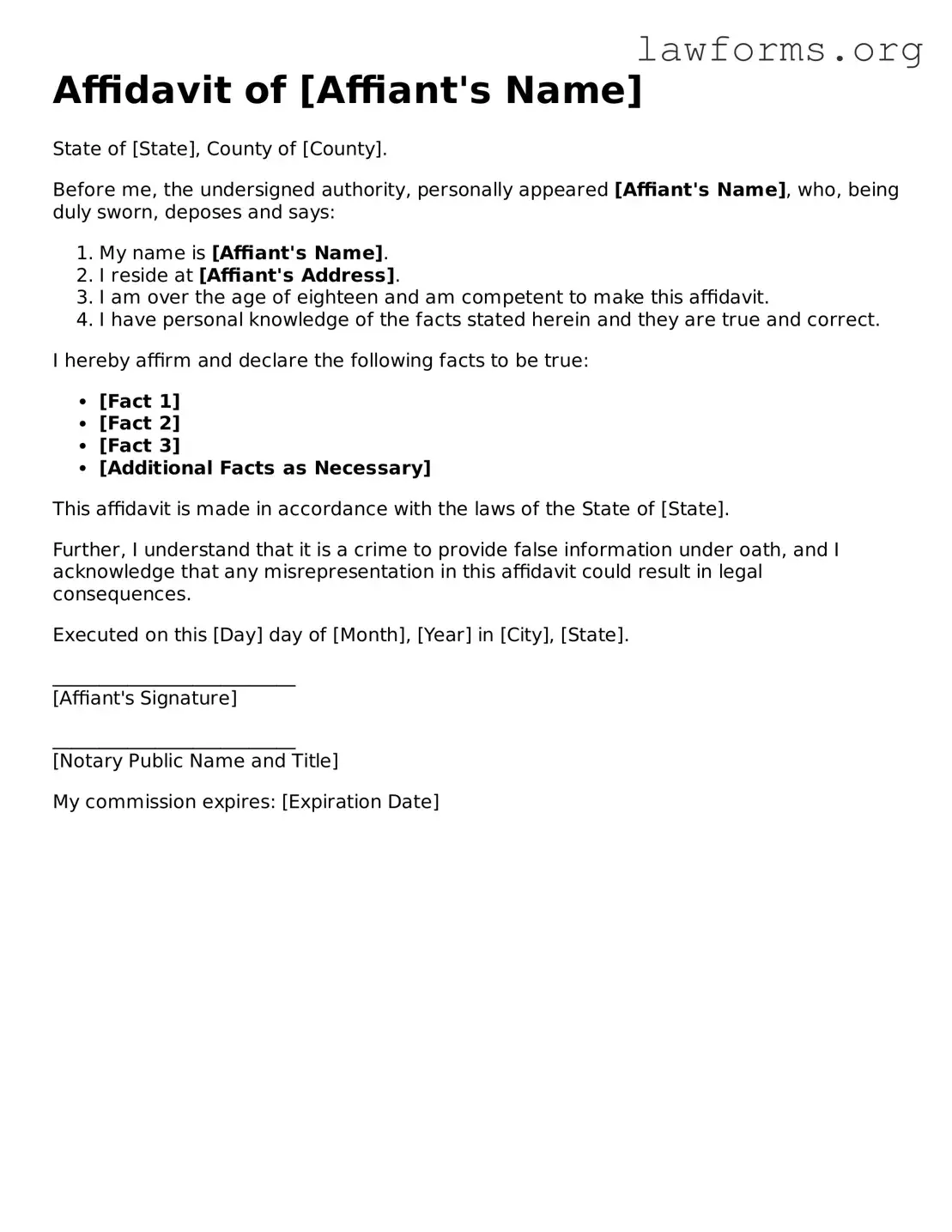Affidavit of [Affiant's Name]
State of [State], County of [County].
Before me, the undersigned authority, personally appeared [Affiant's Name], who, being duly sworn, deposes and says:
- My name is [Affiant's Name].
- I reside at [Affiant's Address].
- I am over the age of eighteen and am competent to make this affidavit.
- I have personal knowledge of the facts stated herein and they are true and correct.
I hereby affirm and declare the following facts to be true:
- [Fact 1]
- [Fact 2]
- [Fact 3]
- [Additional Facts as Necessary]
This affidavit is made in accordance with the laws of the State of [State].
Further, I understand that it is a crime to provide false information under oath, and I acknowledge that any misrepresentation in this affidavit could result in legal consequences.
Executed on this [Day] day of [Month], [Year] in [City], [State].
__________________________
[Affiant's Signature]
__________________________
[Notary Public Name and Title]
My commission expires: [Expiration Date]
